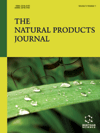
Full text loading...

Sponge-associated microbiota plays a crucial role in maintaining host health by providing chemical defense through the synthesis of diverse secondary metabolites. However, research on these secondary metabolites is still in its early stages.
The present study aimed to investigate new natural antibiotics from mesophotic sponge symbiotic microbiota and explore its in vitro antibacterial activity and preliminary biological function.
Bacteria strain Salinicola sp. LHM was isolated from sponge L. birotulata L26 and identified based on the 16S rRNA gene analysis. Subsequently, the strain was fermented using a liquid M9 medium and screened for antibiotics with an antibacterial guiding assay. Extensive chromatographic methods were introduced to isolate the target compound, and its chemical structure was elucidated by spectroscopic analysis (LC-MS, NMR). The minimum inhibitory concentration (MIC) and cytotoxicity experiments evaluated the isolated compound's biological activity. Furthermore, scanning electron microscopy (SEM), transmission electron microscopy (TEM), and quartz crystal microbalance with dissipation (QCM-D) were used to study the bactericidal mechanism of DLT. Finally, the preliminary biological function was explored by performing the cell-feeding experiment.
We successfully identified one novel natural antibiotic, dodecanoyl-L-tryptophan (DLT), in Salinicola sp. LHM isolated from mesophotic sponge Lotrochota birotulata L26. DLT exhibited potent antibacterial activity against the Bacillus subtilis and Staphylococcus aureus, with MIC values of 32 μM and 16 μM, respectively. The bactericidal tests showed that DLT broke the cell membrane to cause cell death by leaking the cell's inner content. Furthermore, the cell-feeding experiment proved that DLT producer- Salinicola sp. LHM could feed on the inner content of death cells. In addition, DLT also exhibited cytotoxicity against bronchial epithelial cells BEAS-2B, with an EC50 value of 150 μM, indicating a favorable selectivity profile.
This research identified one novel natural antibiotic DLT and provided initial insights into the chemical defense exerted by Salinicola sp. LHM with its secondary metabolite DLT.